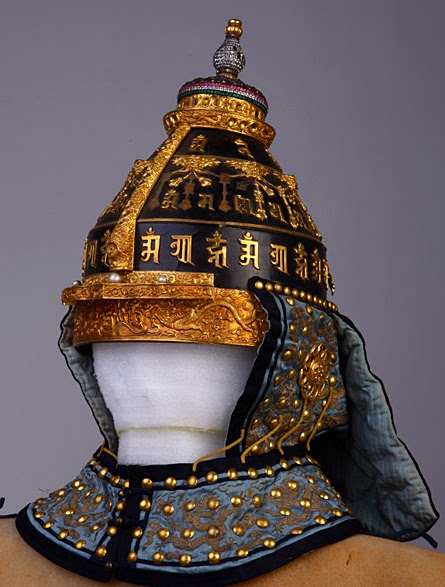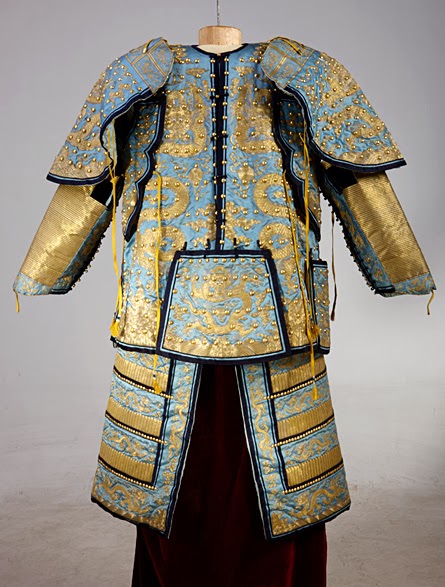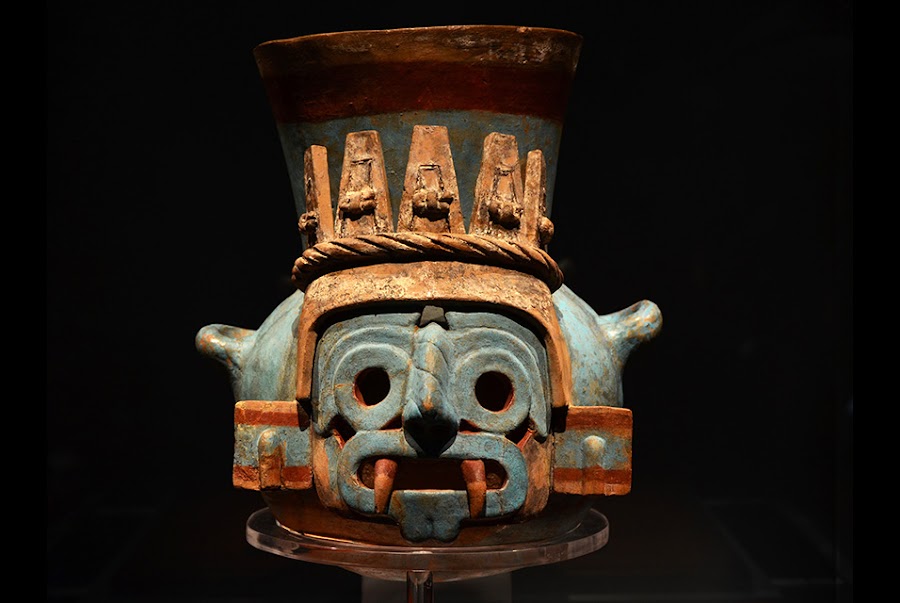The Royal Ontario Museum unveiled The Forbidden City: Inside the Court of China’s Emperors, presented by the Robert H.N. Ho Family Foundation with Manulife as Lead Sponsor. The exhibition is on display in the Garfield Weston Exhibition Hall from Saturday, March 8 until Monday, September 1, 2014. Presented in collaboration with Beijing’s Palace Museum, the show brings to Canada for the first time approximately 250 treasures that were part of Chinese imperial life for five centuries in a city strictly off-limits to all but the emperor, his family, and his personal servants. These objects are the relics of a momentous chapter in China’s long and fascinating history.

More than 80 of the exhibition’s objects, including textiles, calligraphy, paintings, and armour, have never before travelled outside the Forbidden City. Complemented by stunning artifacts from the ROM’s own internationally celebrated Chinese collections, these objects tell captivating stories and reveal the fascinating characters that made the Forbidden City the centre of an immense empire for more than 500 years. Due to the significant number of light-sensitive textiles and paintings, there will be an extensive rotation of objects half way through the exhibition’s engagement, presenting a new opportunity to experience the stories and exquisite objects of the Forbidden City.

The ROM has partnered with Beijing’s Palace Museum to create an exhibition that uncovers untold stories about life in the courts of the Chinese emperors. Dr Chen Shen is the exhibition’s lead curator and the ROM’s Vice President, World Cultures and Senior Curator, Bishop White Chair of East Asian Archaeology. He said, “This exhibition allows Canadians to see, for the first time, the finest objects hidden from view in the Forbidden City. We have worked with our Palace Museum colleagues to develop untold stories about life in the courts of the Chinese emperors; ensuring ROM visitors will enjoy many of China’s national treasures, many of which have never left the palace. These objects — both luxurious and everyday — provide the unique opportunity to advance our understanding of the people who lived within the walls of the Forbidden City.”

Robert H. N. Ho, Founder of The Robert H. N. Ho Family Foundation, said “The Foundation is pleased to present The Forbidden City: Inside the Court of China’s Emperors in Canada. Advancing the understanding and appreciation of Chinese culture is a key mission of our foundation. Robust educational programming in support of the exhibition should encourage wider exploration by the public, especially teachers and students. The Foundation is also proud to once again be working with the ROM, an outstanding institution which together with Beijing’s Palace Museum, has developed this wonderful exhibition, bringing to life the 600-year-old imperial palace and revealing for the first time many of its treasures and secrets. ”

The ROM’s exhibition uncovers the stories of the Forbidden City and China’s last emperors who led their lives deep within the palace’s opulent interior. Through intimate encounters with everyday objects, visitors meet a cast of real characters, including emperors, court officials, concubines, and eunuchs — castrated men who served the imperial families. The ROM’s exploration of life inside the mysterious Forbidden City transports visitors through increasingly restricted areas — the palace’s great halls, grand courtyards, and intricate terraces and roofs, until visitors ultimately gain access to the most private space of all: the emperor’s personal study.

Imperial throne set, The Palace Museum, Gu115711 (throne, footstool only) © The Palace MuseumIn the exhibition’s entrance, visitors gain information about the fascinating locale before progressing into The Outer Court, the official space where the emperor displayed his power only to those invited inside. In this, the exhibition’s largest area, ceremonial bells, suits of armour, weapons and large-scale paintings tell the story of the emperors’ governing and military battles. An exhibition highlight dates to the reign of Emperor Qianlong — a throne, symbolizing his authoritative power. This area also introduces visitors to the first of several characters, including Emperors Yongzheng and Qianlong, two of the most accomplished emperors of the Qing dynasty.

The exhibition’s climatic section takes visitors inside the Emperor’s personal spaces that were once forbidden to all but the emperor. As rulers, emperors were bound to strict institutionalized governance. However, their choices were their own in collecting and personal cultivation. This area showcases some of the most exquisite objects in the imperial collection including jades, calligraphies, and ceramics and an exceedingly rare porcelain “chicken” cup, commissioned by Emperor Chenghua for his mother; only two such cups exist today in the Palace Museum. In this section, a British-made musical clock and the character of a Western missionary represent the foreign dignitaries who gained access to the Forbidden City with gifts from their homelands — pieces much admired by Qing dynasty emperors.

The Forbidden City
China’s imperial palace, known to the world as the Forbidden City, was built from 1406 – 1420. It was the center of government and home to China’s last 24 emperors of the Ming (1368 – 1644) and Qing (1644 – 1911) dynasties. Made up of about 980 buildings and 8700 rooms in over 90 architectural complexes, the Forbidden City remains to this day the largest palace complex in history. Once strictly forbidden to all but the emperors, their families, servants, invited guests, and most trusted officials, the palace gates are now open to all.
The Palace Museum
The Forbidden City became the Palace Museum in 1925, one year after the last emperor was forced into exile. Located in the heart of Beijing, the magnificent site spans over 720,000 square metres and houses the largest collection of China’s imperial treasures. Designated by China’s State Council as one of that country’s most important protected cultural heritage sites in 1961, it became a UNESCO World Heritage site in 1987. Today, it is considered one of the world’s most important museums. Popularly called The Forbidden City, it houses over 1.8 million art treasures spanning 5,000 years of Chinese history with many from the Qing imperial court. It is one of the world’s most visited museums, welcoming a record 182,000 visitors on October 2, 2012.
Source: The Royal Ontario Museum [March 08, 2014]








































